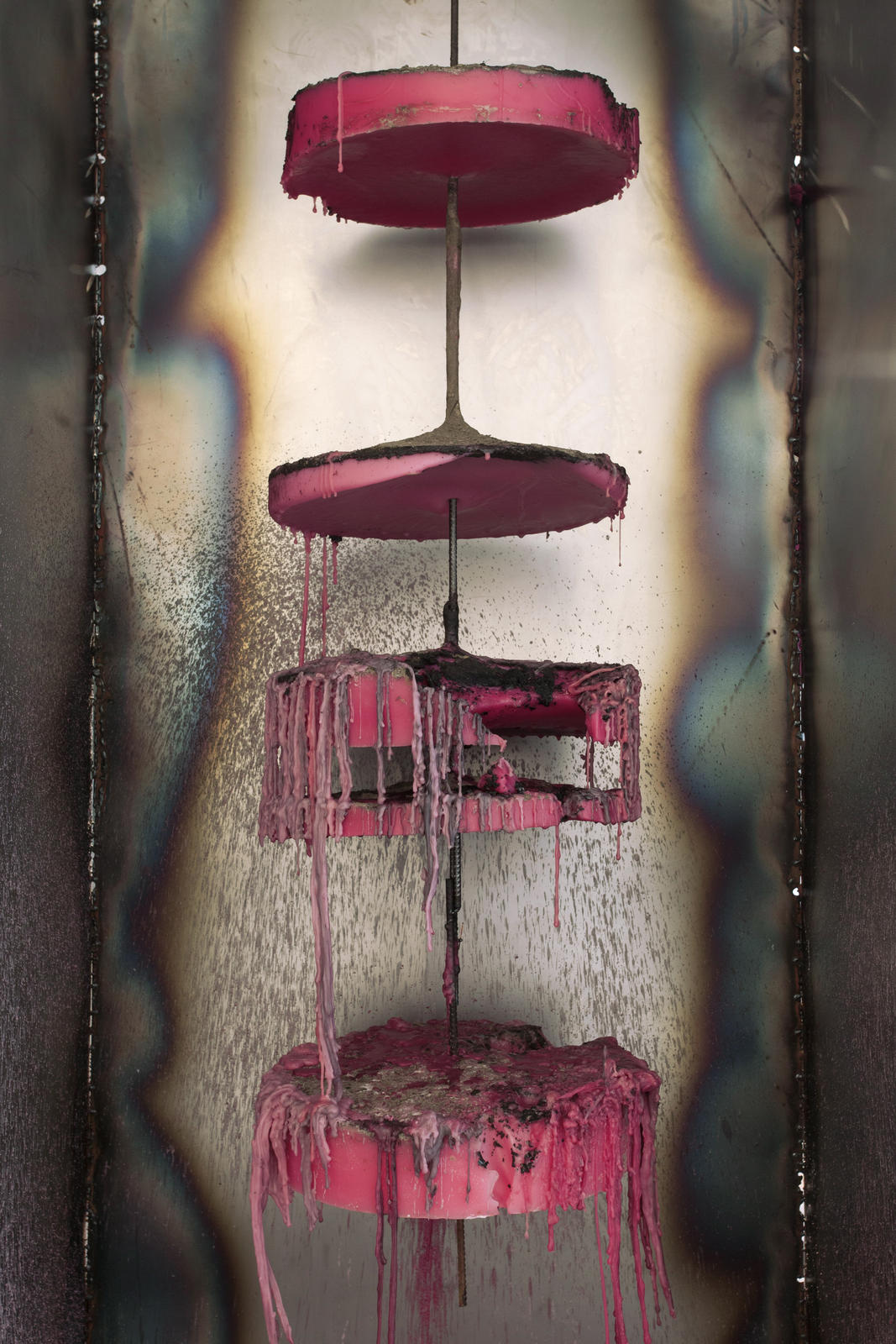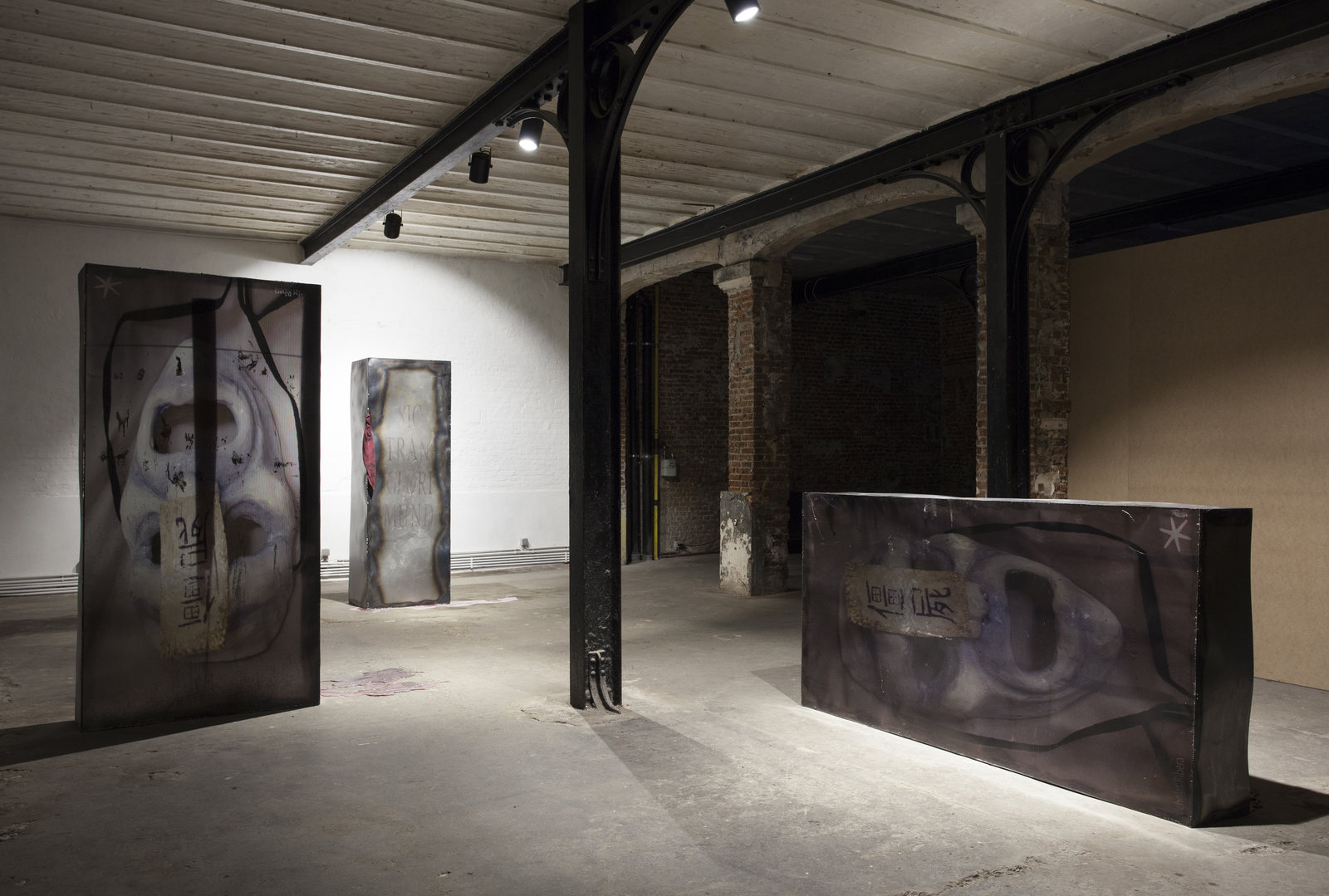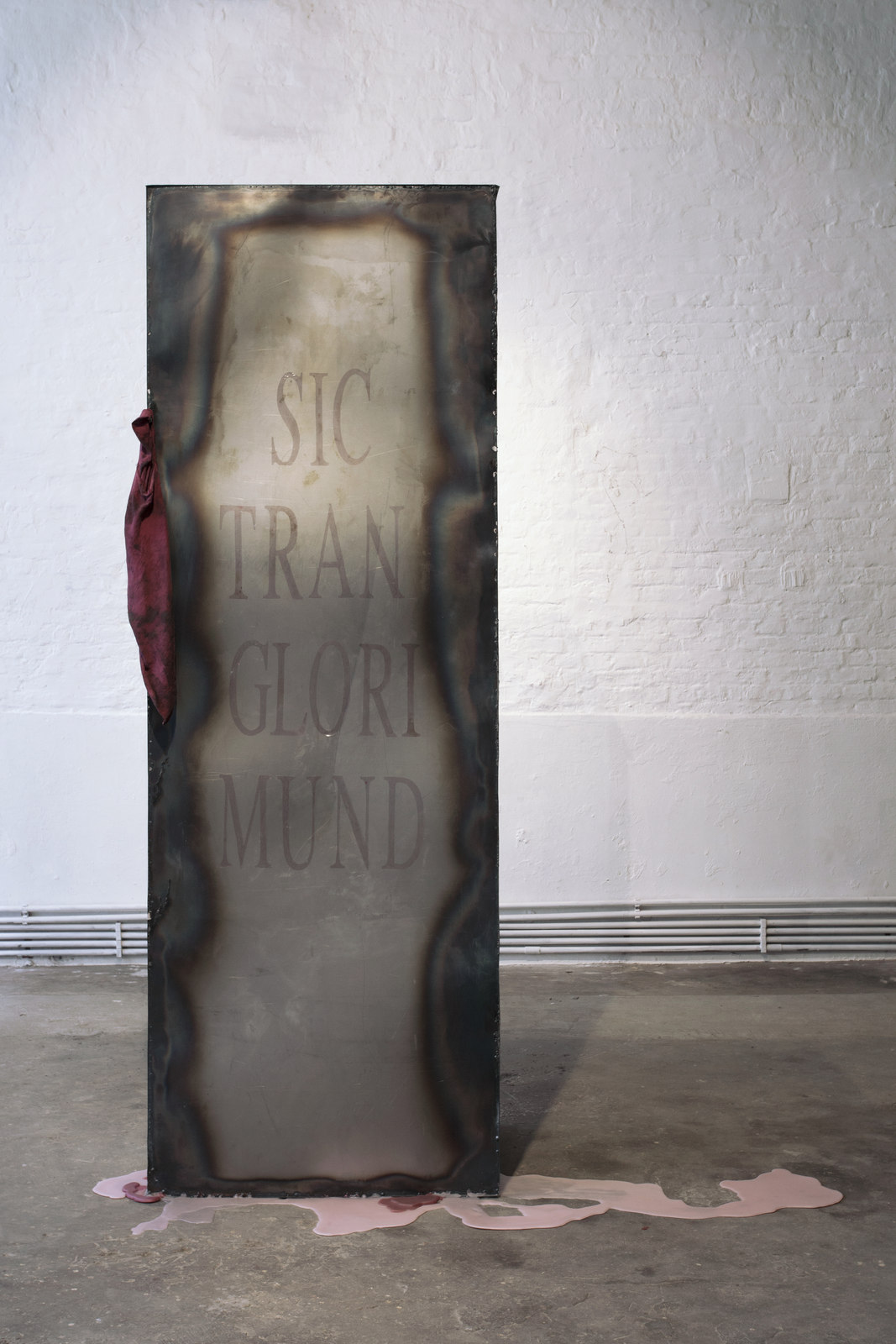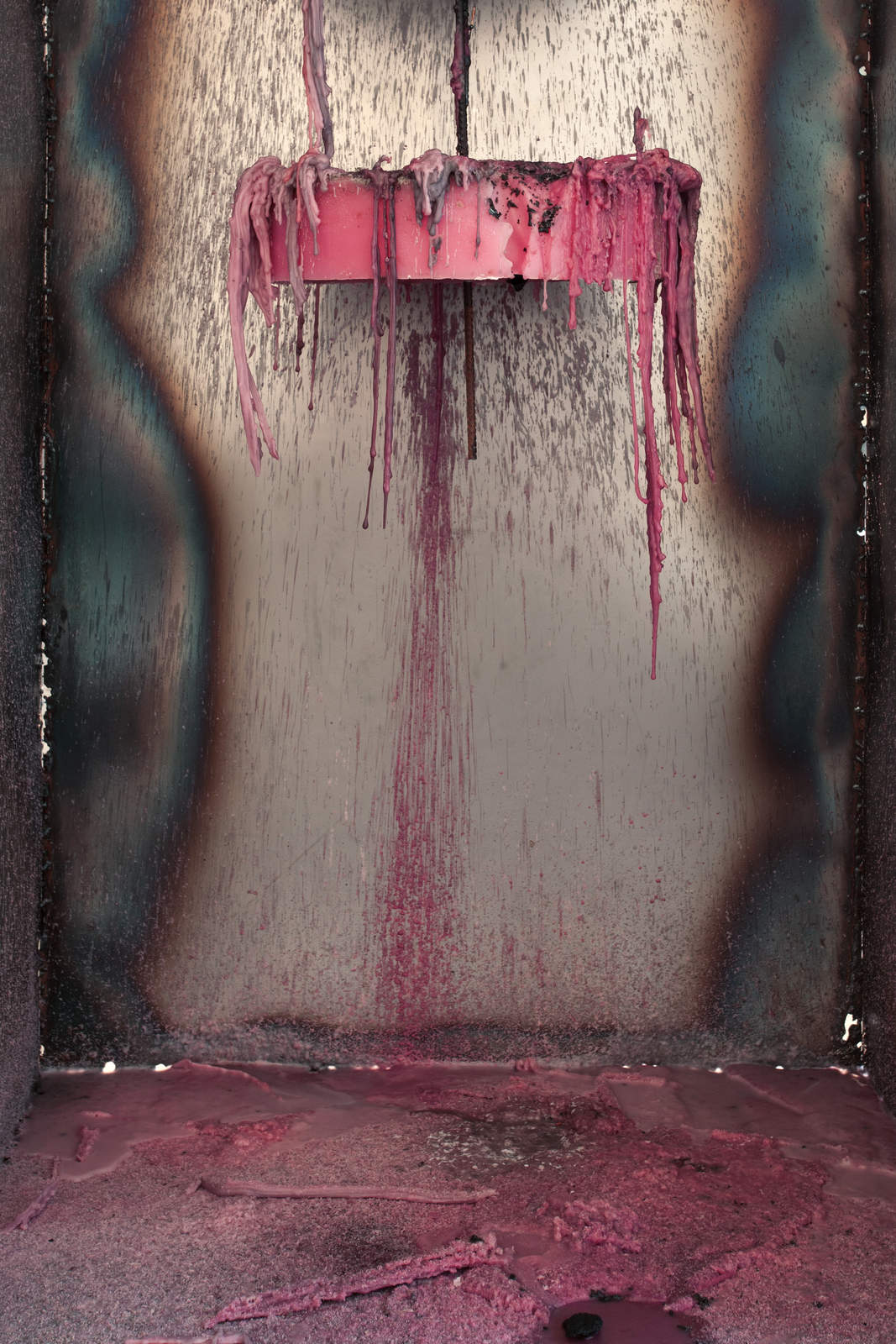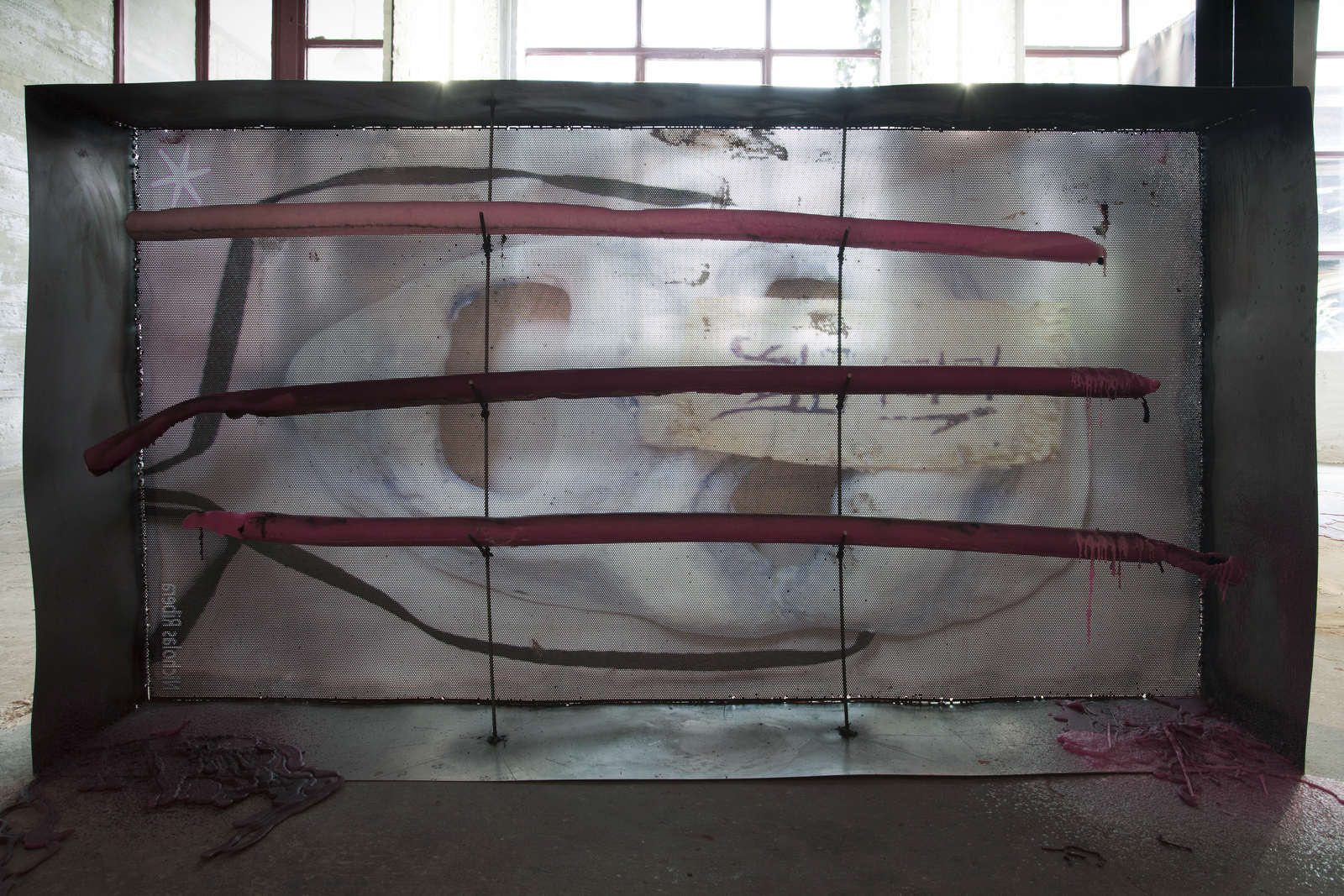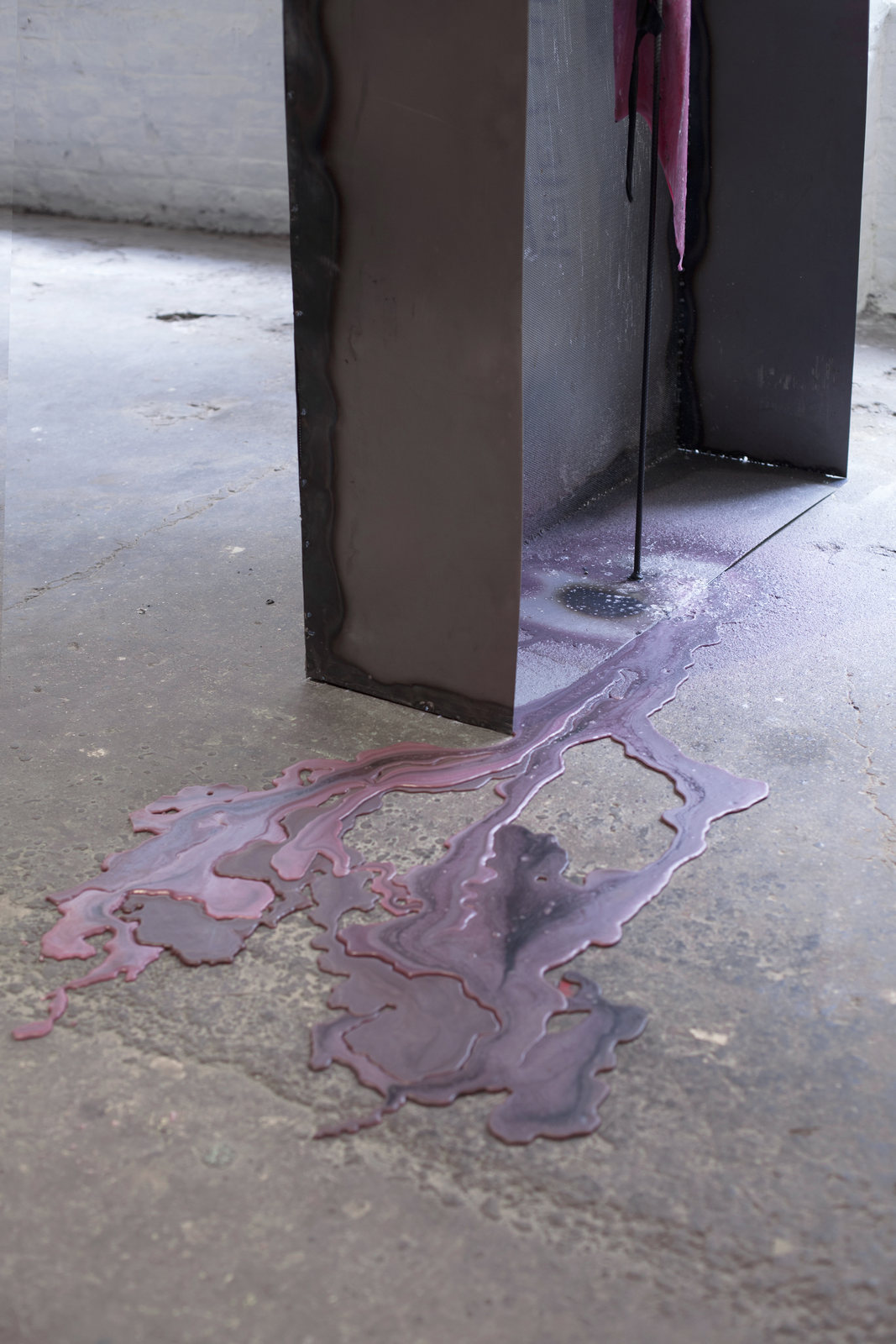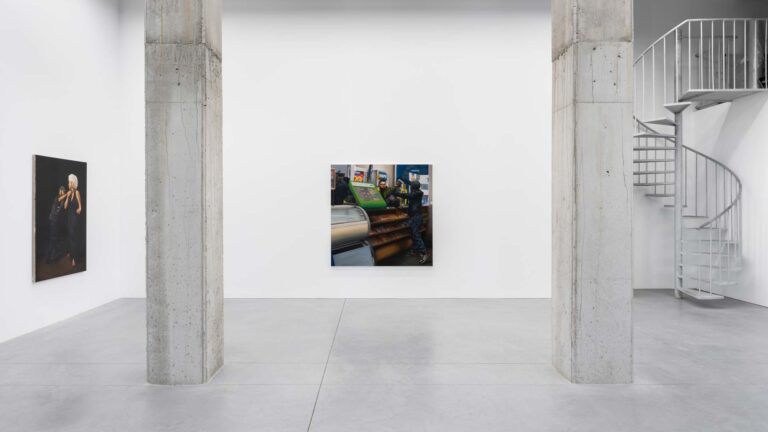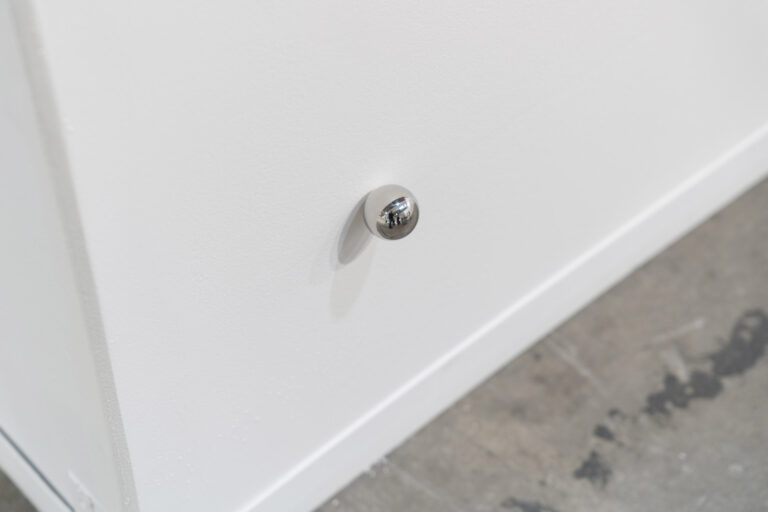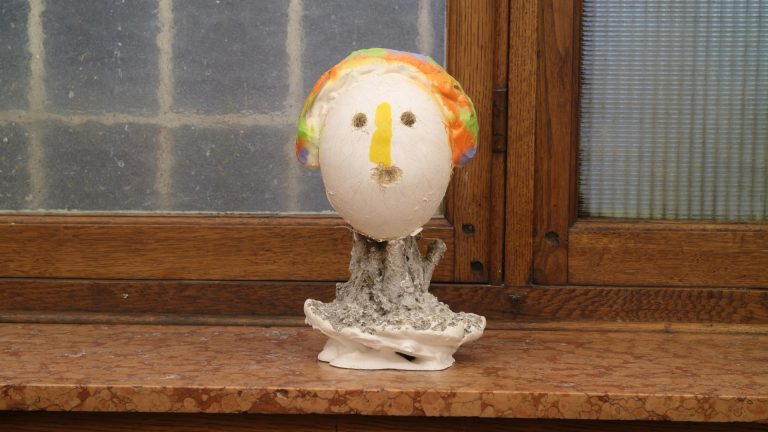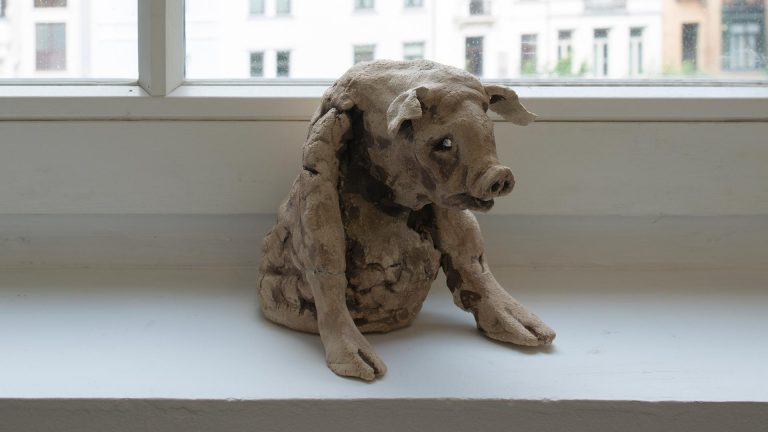Artists: Clemence de La Tour du Pin and Antoine Renard
Exhibition title: Peripheral Healing
Venue: Komplot, Brussels, Belgium
Date: September 8 – October 8, 2016
Photography: Ilse Raps, all images copyright and courtesy of the artists and Komplot
Some people think they need a messiah, others think they need to be one. Any decent manager will think of themselves as such. Shop assistants are apostles, customers potential brethren.
When the flagship store first opened, its windows were subject to such frequent attack that its proprietors quickly stopped bothering to replace the glass. Glued over and reinforced with polyflex acrylic sheets, the shopfront is patterned with layered, circular fractures. Though bricks bounce, when sunlight hits, they shatter into fractal shards. Skin balms and hand creams are differentiated by labels, crowded with ingredients listed in tiny, illegible lettering. No numbers or chemicals are named, rather stringy threads of bacteria and intangible spirits. Enriched with oily solids, that are clear or yellow and have no smell or taste, the base cream originated from an organic chlorine compound; the oily solids are mixed to be very stable, resistant to extreme temperature and pressure.
The story begins in a familiarly uncanny place, staying long enough to notice a mechanical chirp interrupting the sound of waves lapping at the shore. There is the horizon; an uninterrupted line separating competing shades of blue. And place holders; assets and models hijacked from a similar game pockmarking the flat landscape with unrealised intentions. Though rules and objectives are voluntary, their internal logic is nearly impossible to dismantle or avoid, and while there isn’t exactly an end point, around some corners there is little more than code. It is possible to plunge the water and just keep on swimming down, because the game doesn’t care about coming up for air.
Here, arctic mammals exhibit inchoate adaptations to rapidly changing oceanic conditions. Their blubber is thin and clear with hard yellow lumps. To turn it into a substance suitable for human cosmetic use, it must be homogenised. Their guts are filled with petrochemical refuse, but this is no cause for death. Their guts are bloated with emergent bacterial strains, those that thrive on plastic, mercury and toxic sludge. As a result their skin is thicker, shinier, resistant to heat and cold. Wounds and injuries are rare; they do not heal.
“The number one go-to fruit for gory sound effects is the watermelon; there are so many great sounds hidden in it. You can crunch, cut and rip the peel apart which is great for dismemberment and ‘bodyopening’. Understanding these sound effects didn’t change the way I hear them in horror films, but it did kind of change the way that I feel around fruit.” He takes out a tub of moisturizer, removes its top and and places two fingers in the open mouth. He thrusts them up and down until he succeeds in producing a wet, sucking sound. “Obscene little sweeties, aren’t they.”
He likes to talk about a sideproject developing bacterially lined fleshlights.
“Their insides are moist, warm and selflubricating, like mucous membranes.” He started screening instore apostles to weed out signs of bad psychic hygiene, after a malignancy was detected in one of the products.
There are probably trillions of different kinds of bacteria that live in human bodies, most of them unknown, each has its own diet, initiates different processes, activates particular human genes: an ecology of competing interests, desires, longing and cravings. By older estimates, bacteria outnumbered human cells as much as 100 to one, encouraging the idea that the human body is more a vessel for bacteria than it’s own sovereign organism. They don’t talk about allergic reactions, though application resulted in inflammation, turning clear, healthy skin purplish then grey. Slowly devoured by flesh eating microbes, the body, the vessel becomes its own coffin.
–Sarah M Harrison

